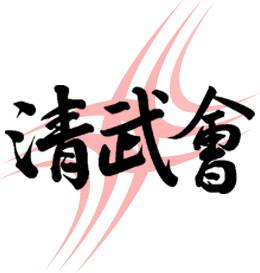
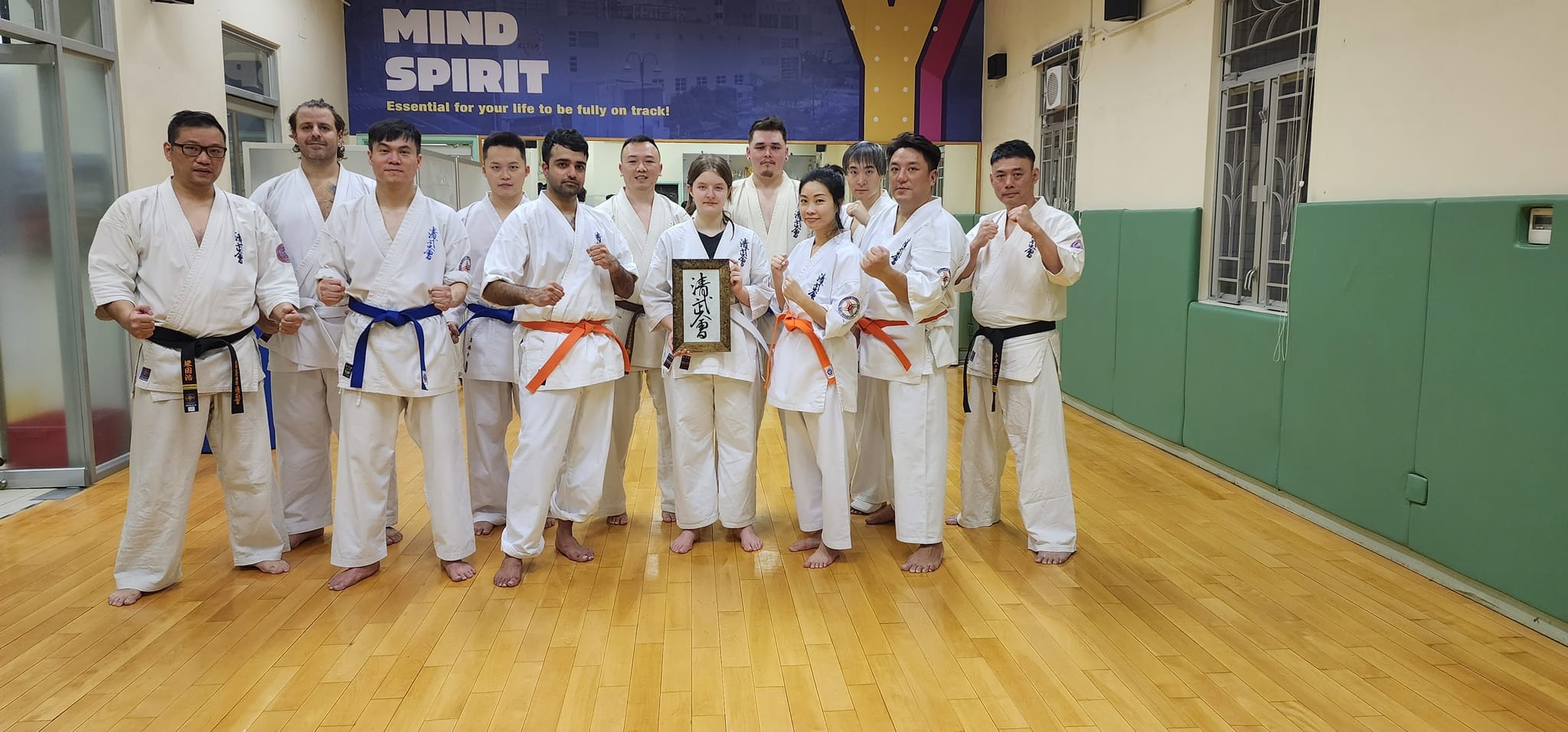
Training Information
Students will learn various breathing techniques through the essence of Kata trainings, stamina training, natural muscular toning, stretching and flexibility, breaking techniques (tameshiwari), and weapons (Bo, Kun and Nanchukus). Everyone can learn with their own pace whether it is from basic techniques to katas, self-defense to some articulated grabbing techniques of Jujitsu, and kumite (fighting) training.
| Grades and Progression |
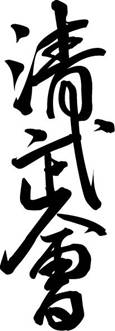 |
When a student reaches a higher level within the same belt color, a stripe is added to the belt. For example, a Blue Belt with one stripe represents 7th kyu. |
| Belt Grading System |
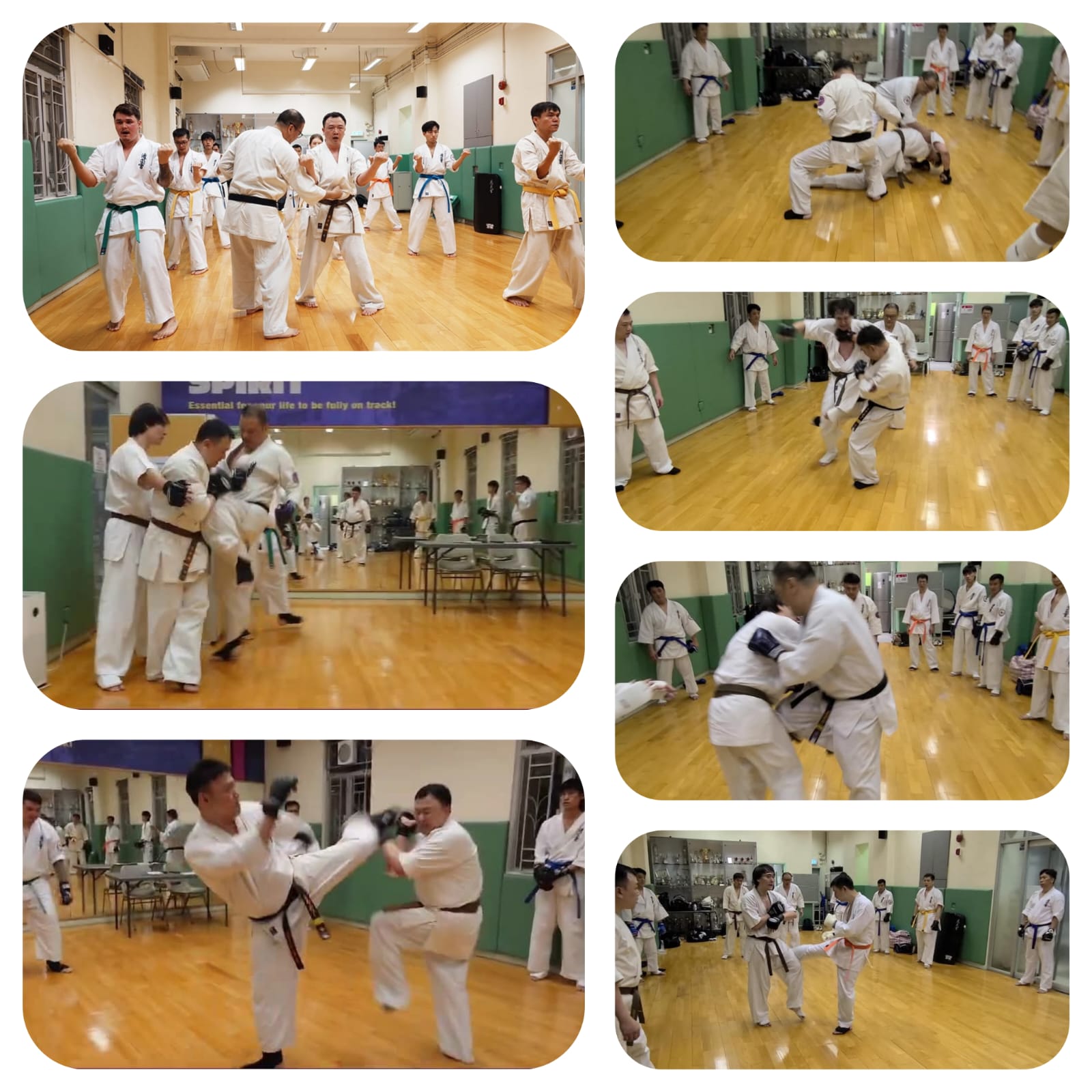
Belt Examinations:
1. Spring Examination (March)
2. Summer Examination (June)
3. Autumn Examination (September)
4. Winter Examination (December)
Beginners must have four months of training in order to have their first examination (Exception to students with prior experience in karate training).
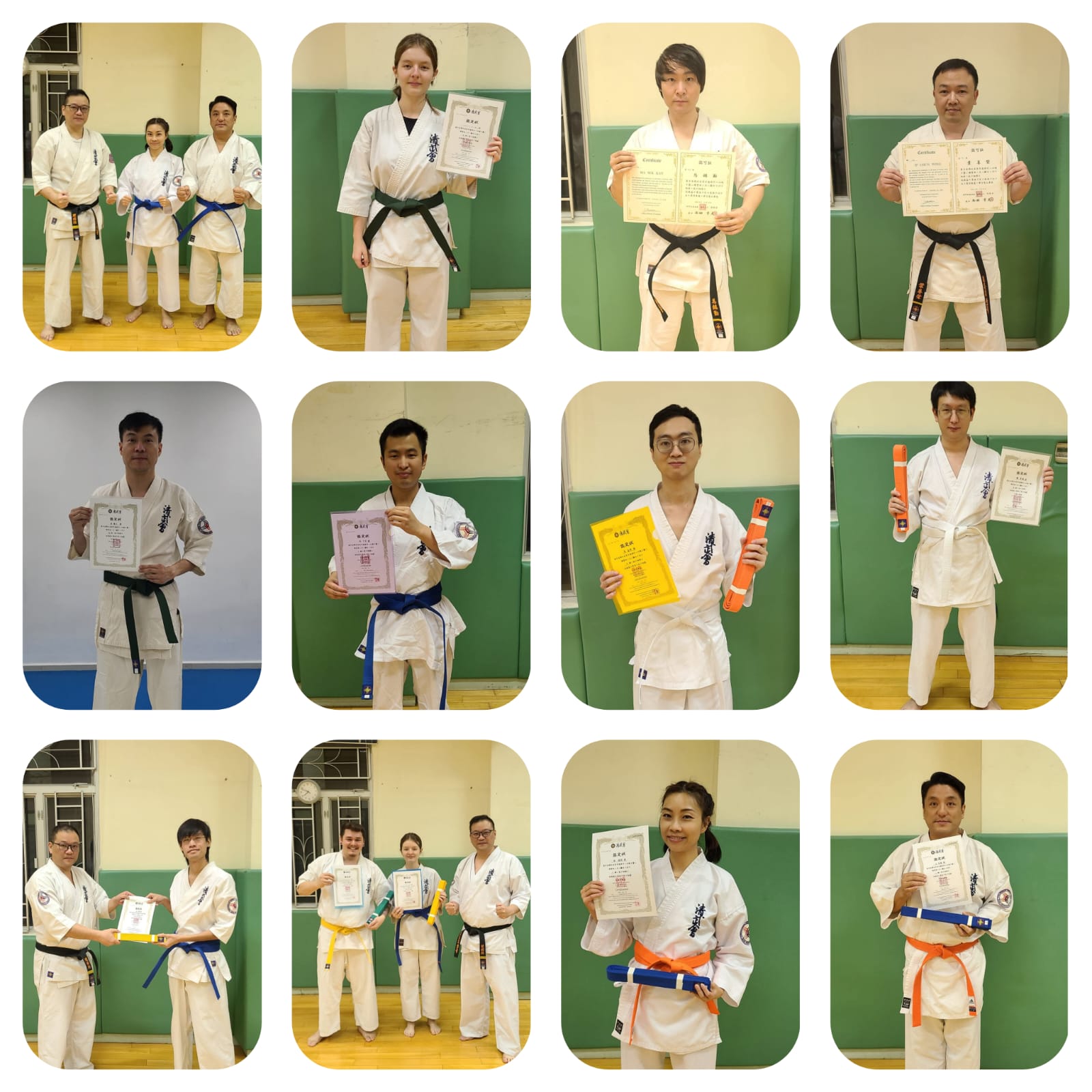
| Training content |
Dojo Manner, Syllabus, Basic Exercises, Preliminary and warm up exercises & Leg stretching exercises.
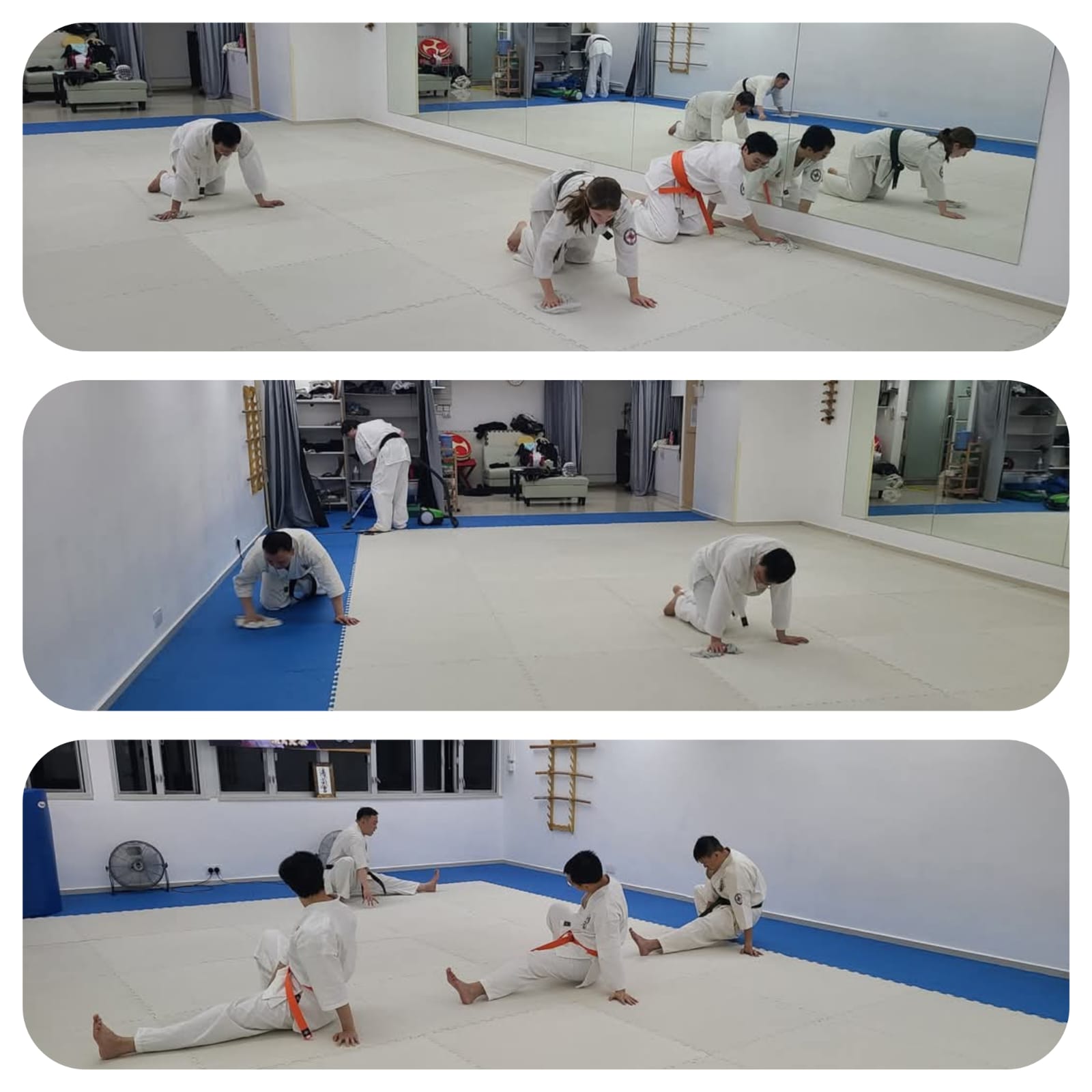
Hand and arm as Weapons: Seiken (normal fist), Uraken (back fist), Tegatana (knifehand), Segatana (reverse knifehand), Nukite (piercing hand), Koken (arc fist), Hiji (elbow), Shotei (palm heel thrust), Tettsui (iron hammer fist) etc.
Hand and arm’s defence: Jodan Uke (upper body block), Chudan Soto Uke (middle outside block), Chudan Uchi Uke (middle inside block), Gedan Barai (lower lock), Shotei Uke (palm heel block), Juji Uke (cross block) Mawashi Uke (roundhouse block), Koken Uke (arc fist block) etc.
Kicking Techniques: Mae Keage (front rising kick), Soto and Uchi Mawashi Geri (inside and outside waving kick), Mae Geri (front kick), Mawashi Geri (roundhouse kick), Yoko Geri (side kick), Ushiro Geri (back kick), Kansetsu Geri (joint kick), Hiza Geri (knee kick), Kin Geri (groin kick), Ushiro Mawashi Geri (reverse kick) etc.
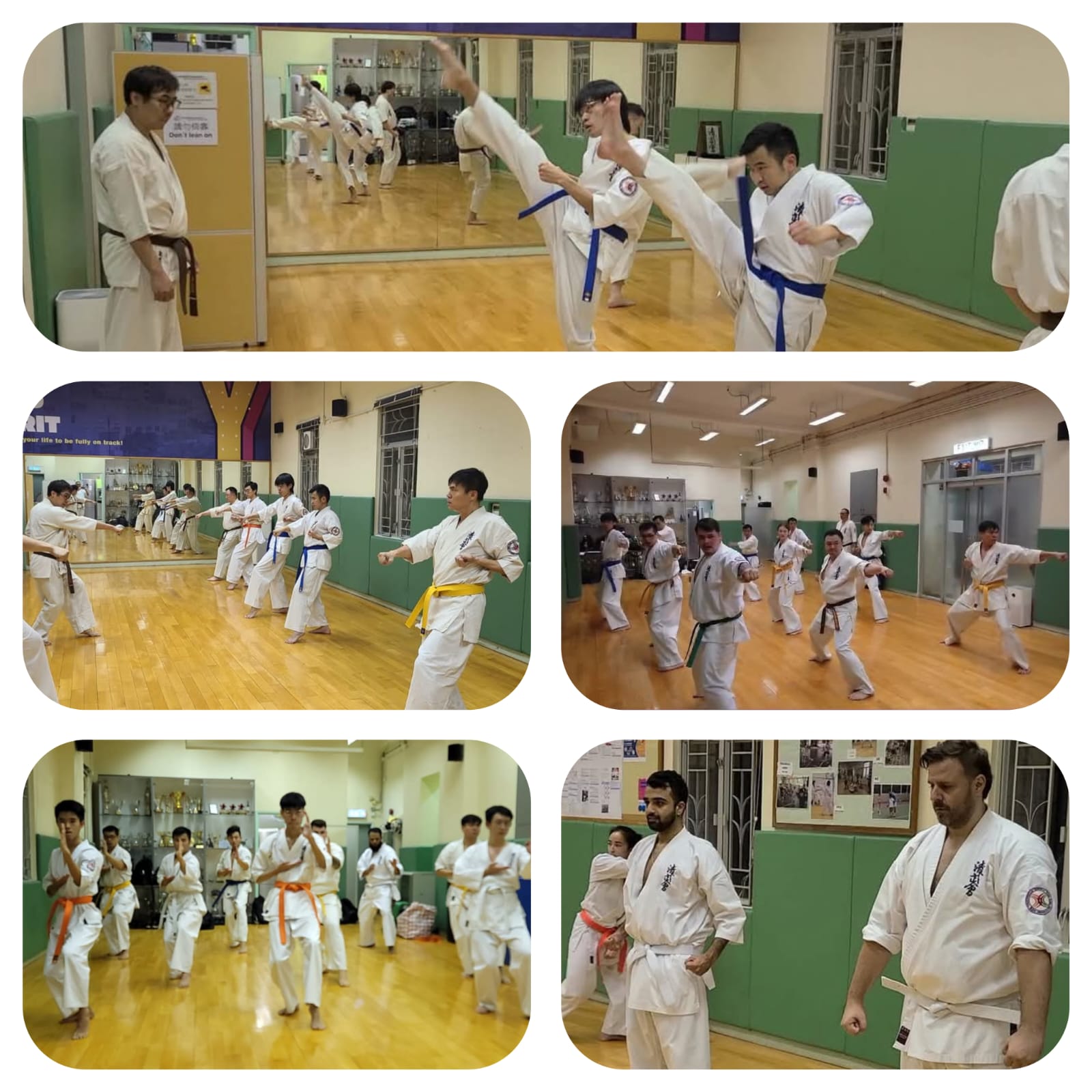
Stances: Fudo Dachi (immobile stance), Musubi Dachi (open foot stance), Sanchin Dachi (three-point stance), Kiba Dachi (horseback stance), Heiko Dachi (parallel stance), Yoi Dachi (ready stance), Zenkutsu Dachi (forward leaning stance), Kokutsu Dachi (back leaning stance), Neko Ashi Dachi (cat stance), Tsuru Ashi Dachi (Crane stance), Kumite Dachi (fighting stance) etc.
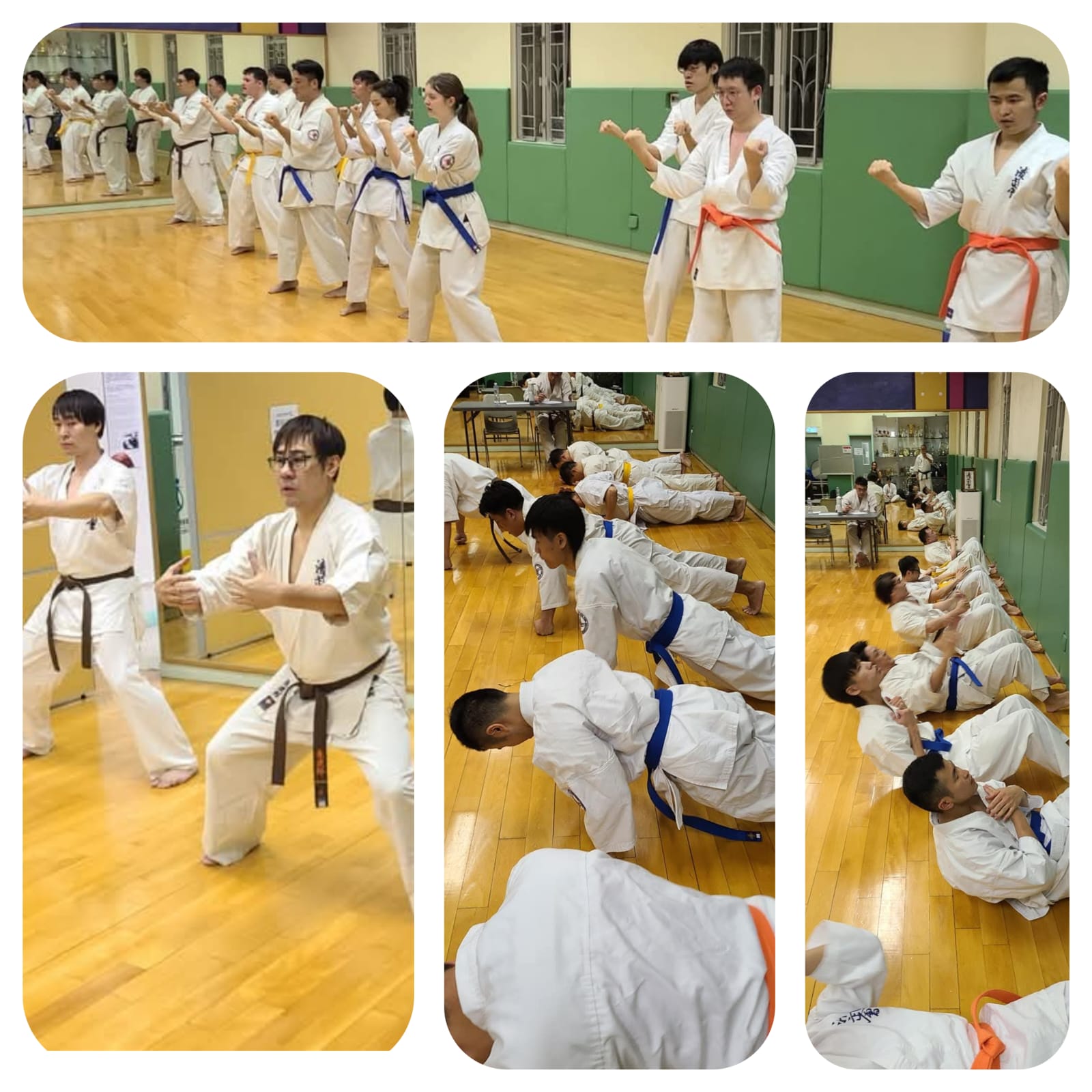
Breathing: Ibuki (forced tension breathing) Front Breathing, Back Breathing.
Special Training Exercises.
Fitness Exercises: Push-up in fist form, in finger form and wrist form, Squat and Sit-up.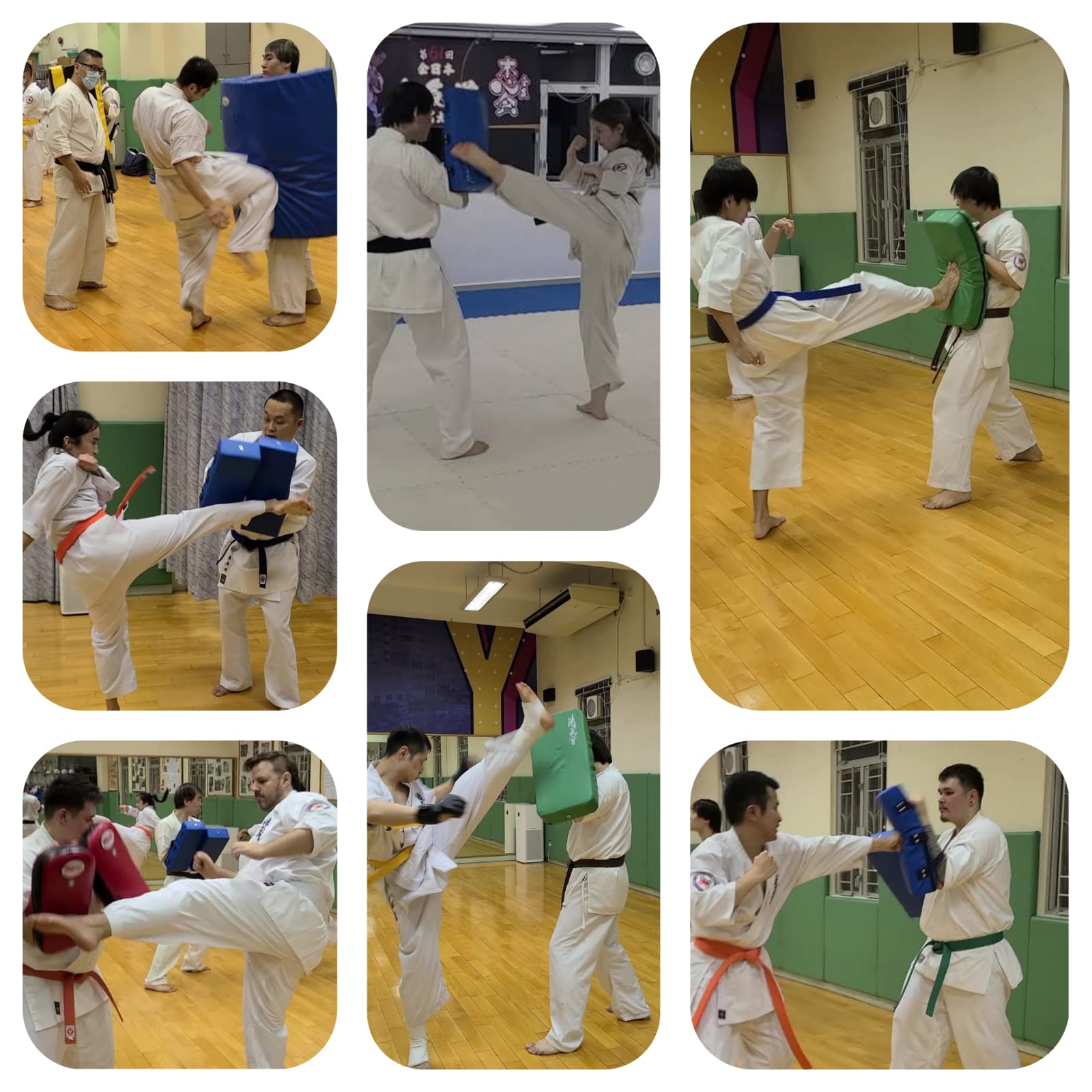
Exercises using the pad and the sandbag: Training of different techniques combination and also work with the rhythm of both breathing and movement.
Sparring training: Sanbon kumite (thee form sparring), Ippon kumite (one form sparring) and Jiyu kumite (free sparring) (Students are recommended to wear glove and shin-pad for protection during the free sparring training).
Foot work and balance training: Moving in fighting stance and manage to balance well during the shadow sparring.

Distance training: Control the distance and manage to fight in different distances.
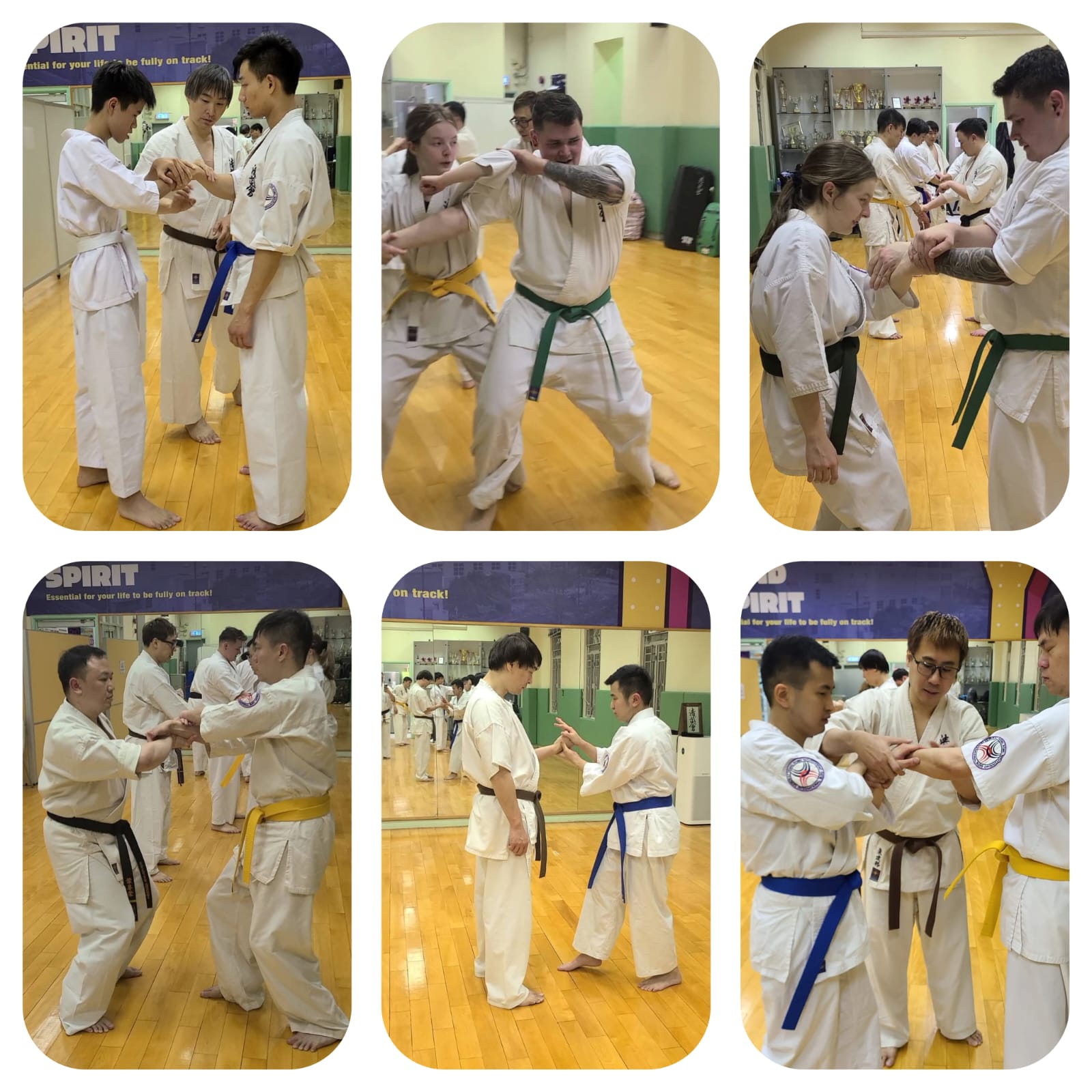
Self-denfence: Not only teaching the various self-defence techniques. Also explain the weakness parts of body. So that students would be more alert to protect their body more efficiency.
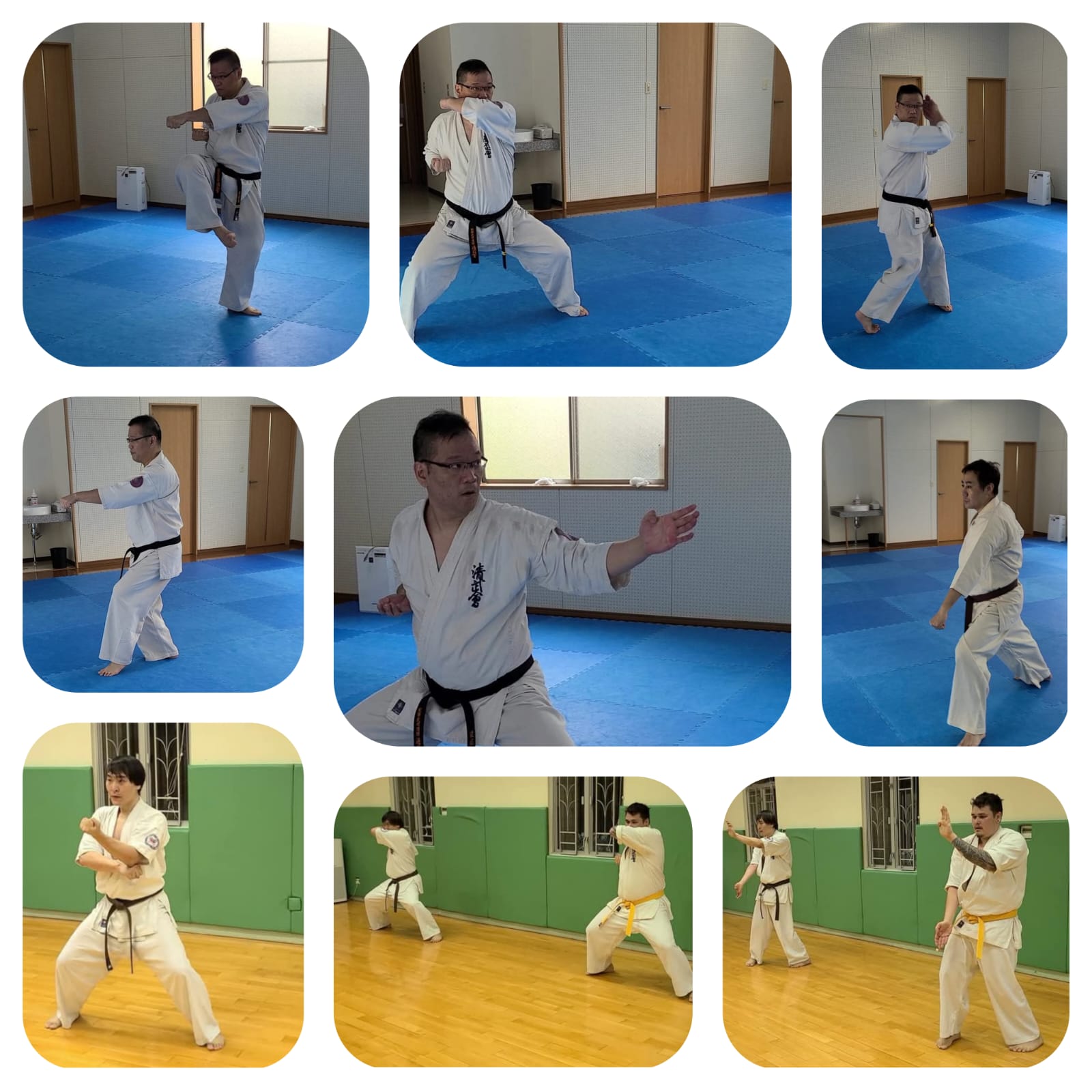
Kata:
Jyuji Kata Ichi, Jyuji Kata Ni & Jyuji Kata San.
Taikyoku Sono Ichi, Taikyoku Sono Ni & Taikyoku Sono San.
Kokutsu dachi Taikyoku & Kiba dachi Taikyoku.
Pinan Sono Ichi, Pinan Sono Ni, Pinan Sono San, Pinan Sono Yon & Pinan Sono Go.
Yantsu & Tsuki no Kata.
Tekki Sono Ichi, Tekki Sono Ni & Tekki Sono San.
Saifa, Gekisai Dai, Gekisai Sho & Seinchin.
Tensho, Sanchin & Sanseru. etc.
Kata are pre-arranged forms of demonstrating methods of attack and defense.
